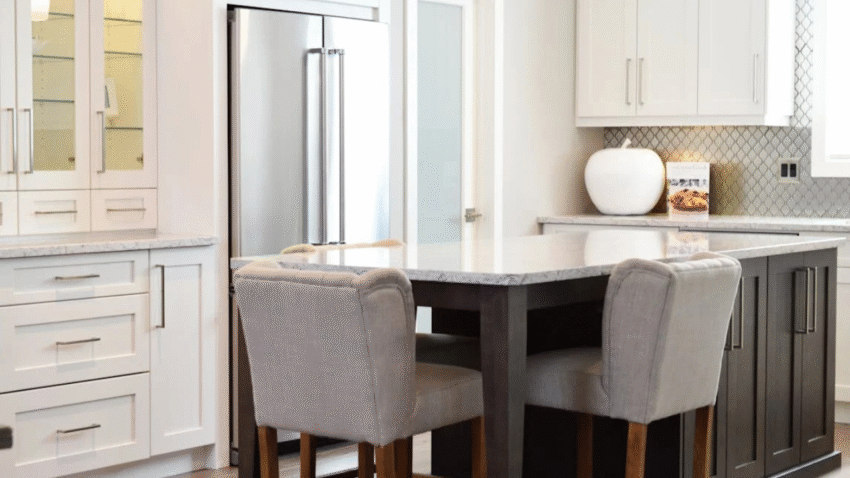Introduction
Warming up last night’s dinner should be quick and easy — but doing it wrong can lead to dry food, weird textures, or worse, foodborne illness. In this guide, you’ll learn how to safely reheat leftovers while keeping them tasty and safe to eat. Whether you’re using a microwave, oven, or stovetop, these tips will help you enjoy your meals a second time without risking your health or sacrificing flavor.
Why Safely Reheating Leftovers Matters in the Kitchen
Reheating food isn’t just about getting it hot — it’s about reaching the right internal temperature to kill harmful bacteria. Improper reheating can allow dangerous microbes like salmonella or listeria to survive, especially in foods like meat, rice, or dairy.
Safe reheating also:
- Preserves the original taste and texture of your meals
- Reduces food waste by making leftovers enjoyable again
- Ensures even heating to avoid cold spots (especially in microwaves)
- Saves money by stretching your groceries further
By mastering safe reheating techniques, you’ll protect your health and make the most of your food.
Step-by-Step Guide to Safely Reheating Leftovers
Step 1: Store Leftovers Properly
Before reheating, make sure your leftovers were stored the right way. Follow the 2-hour rule: refrigerate or freeze food within 2 hours of cooking (1 hour if the room is hot).
Store leftovers in:
- Airtight containers
- Shallow dishes (for faster cooling)
- The refrigerator (below 40°F / 4°C) or freezer (below 0°F / -18°C)
Shelf Life Reminder:
- Refrigerated leftovers: 3–4 days
- Frozen leftovers: Up to 3 months (for best quality)
Kitchen Tip: Label containers with the date to keep track of freshness.
Step 2: Choose the Right Reheating Method
Not all foods reheat the same. Select the method that best matches the type of food and portion size.
Microwave:
- Best for: Individual servings, rice, casseroles, soups
- Pros: Fast and convenient
- Cons: Can cause uneven heating or soggy textures
Oven:
- Best for: Roasts, baked goods, pizza, large portions
- Pros: Even heating and better texture
- Cons: Slower; may dry out food
Stovetop:
- Best for: Sauces, stir-fries, pasta, soups
- Pros: Good control over temperature
- Cons: Requires monitoring and stirring
Air Fryer or Toaster Oven:
- Best for: Fried foods, pizza, pastries
- Pros: Crisps food instead of making it soggy
- Cons: May require oil spray or foil to prevent burning
Pro Tip: Avoid reheating the same food more than once. Only warm up what you plan to eat.
Step 3: Heat to the Right Temperature
Use a food thermometer to ensure leftovers reach an internal temperature of 165°F (74°C) before serving. This kills harmful bacteria and makes food safe to eat.
- Soups, sauces, and gravies: Bring to a full rolling boil
- Meats: Check thickest part for even heating
- Microwaved food: Stir halfway through to eliminate cold spots
Kitchen Insight: Cold spots can harbor bacteria — always stir and check thoroughly when microwaving.
Step 4: Cover Food to Retain Moisture
Whether you’re using the microwave or oven, cover your food to help retain moisture and promote even heating.
- Microwave: Use a microwave-safe lid or damp paper towel
- Oven: Cover with foil to prevent drying
- Stovetop: Use a lid to trap heat and steam
Moisture Boost Hack: Add a splash of water, broth, or sauce before reheating to refresh dry dishes like rice, pasta, or casseroles.
Step 5: Stir, Flip, or Rotate Food While Heating
Stirring or flipping during reheating ensures even temperature distribution and prevents cold centers.
- Stir soups, stews, or sauces every 1–2 minutes
- Flip items like meats, sandwiches, or pancakes halfway through
- Rotate microwave plates or use turntables if available
Time Saver: Cut large portions into smaller pieces for quicker and more even reheating.
Step 6: Rest Before Serving
Once reheated, let food rest for 1–2 minutes (especially in the microwave). This allows residual heat to finish the cooking process and helps equalize temperature throughout the dish.
Safety Reminder: Be cautious with steam or hot liquids when removing covers — always open lids away from your face.
Common Mistakes to Avoid
- Mistake: Reheating in plastic takeout containers.
Solution: Use microwave-safe glass or ceramic containers to avoid chemical leaching. - Mistake: Not reheating to 165°F.
Solution: Use a digital food thermometer to check internal temperature, especially for meat and poultry. - Mistake: Reheating large portions whole.
Solution: Cut food into smaller pieces or stir frequently to ensure even heating. - Mistake: Skipping the cover.
Solution: Always cover food when reheating to retain moisture and heat evenly. - Mistake: Reheating multiple times.
Solution: Reheat only what you plan to eat to avoid food safety risks from repeated warming and cooling.
Extra Tips & Kitchen Hacks
- Steam Reheat Rice: Place a damp paper towel over rice in the microwave and reheat in short bursts to keep it fluffy.
- Use Broth for Pasta: Reheat leftover pasta with a splash of broth or sauce to revive texture and flavor.
- Crisp Leftover Pizza: Reheat in a skillet or toaster oven — never the microwave — for a crisp crust.
Product Suggestion: Invest in a reliable food thermometer to guarantee food safety every time you reheat.
Related Task: After reheating leftovers, clean your microwave or oven weekly to avoid buildup and odors from frequent use.
Conclusion
Safely reheating leftovers is about more than convenience — it’s about protecting your health while preserving the taste and texture of your meals. By using the right method, heating to the proper temperature, and avoiding common mistakes, you can turn yesterday’s dinner into a delicious encore performance.
Final Tip: Build the habit of safe reheating into your kitchen routine — your stomach (and your guests) will thank you.
Bookmark this guide to keep every leftover meal delicious and safe!
